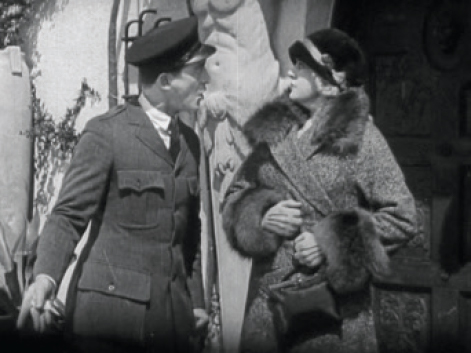A social-conscience movie billed in its opening sequence as a “startling human document,” the 1925 silent film The Red Kimona tells the true tale of the fall and redemption of a sex worker and murderess named Gabrielle Darley. Underage and unloved by her family, Gabrielle is seduced by a blackguard who lures her to New Orleans, where he forces her into prostitution. Upon learning of his impending marriage to another woman, she follows him to Los Angeles and shoots him dead. An anguished trial ensues, during which opportunistic society lady Beverly Fontaine takes up Gabrielle’s cause for its reflected notoriety. To even her own shock, Gabrielle is acquitted, but finds herself friendless, penniless, and with nowhere to go and no honest means to capitalize on her celebrity. She reluctantly accepts the invitation to stay on Fontaine’s sumptuous estate, where the socialite exploitatively parades her in front of her wealthy female friends, a gaggle of limousine liberals avant la lettre who use the misfortunes of the underclass to demonstrate their own high-mindedness while doing very little to help anyone concretely.
At first it seems like writer-producer Mrs. Wallace Reid—in reality Dorothy Davenport—is poised to deliver a knight in shining armor in the form of Fontaine’s humble chauffeur, Fred. When Gabrielle loses her benefactress’s support and finds no one willing to hire a woman with a criminal record, she makes for the train station to head back to New Orleans, where the only avenue open to her would seem to be more prostitution. Fred learns of her plight and rushes to the station to stop her, and here the film does something surprising even by today’s standards: he doesn’t catch her. Gabrielle returns to the red-light district; once there, though, she finds she can’t bring herself to return to her old degraded ways and, through a series of twists, winds up scrubbing floors in a city hospital. On beautifully written title cards, she asserts that she wants to “do some useful work—earn my redemption.”
The failure of Fred’s chase indicates an understanding on Reid’s part that was well ahead of its time: that a movie in which a heroine is corrupted by a bad man and redeemed by a good one has no significant moral content, because the heroine has no agency. (Fred eventually does track Gabrielle down at her new workplace, but only months later, and he is about to depart for the western front of World War I, so the possibility of their one day being together is anything but certain, certainly not what “saves” her.) Gabrielle Darley does not merely have attitudes, as is too often the case with female characters in films: she makes choices, and The Red Kimona allows her to experience their consequences.
This is stunning compared to subsequent films with prostitute protagonists. Butterfield 8, for example, the 1960 film starring Elizabeth Taylor as a high-paid call girl, also culminates in a climactic chase in which her love interest literally drives her to her death in a ridiculous crash. Taylor’s character has just refused her wealthy lover for the last time and is preparing to leave Manhattan for Boston to begin her life anew; her death, of course, denies her this option, whereas her lover, though he is essentially a murderer, gets to go home to his wife, who forgives him without question.
Or take 1990’s Pretty Woman, which also concludes with a passionate pursuit: although Julia Roberts’s down-on-her-luck Hollywood prostitute has asserted her desire to move to San Francisco, earn her GED, and start over independently, Richard Gere hops into his white limo, red roses in hand, and climbs her fire escape to convince her she will be happier freed from the burden of making her own choices. From their passionate kiss, we are given to understand that she agrees. And in Mighty Aphrodite, Woody Allen’s 1995 retelling of the Pygmalion myth, Mira Sorvino’s hooker with a heart of gold does not even have the ambition to give up whoring, yet Allen’s sculptor swoops in and convinces her to do so.
In each case, our prostitute protagonists wind up with their agency permanently foreclosed upon. In contrast, The Red Kimona gives us a chase scene in which the party trying to escape is never even aware that she’s being pursued: she is fleeing something larger, namely the prurient assumptions of polite society regarding her “fallen” state. Yet Gabrielle’s is the most breathtaking getaway of the lot, and at its end she winds up as free as we’ve ever seen her.
—Kathleen Rooney





